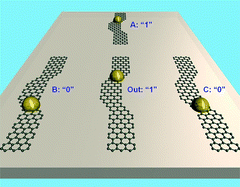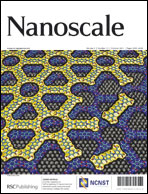Quantum cellular automata (QCA) is an innovative approach that incorporates quantum entities in classical computation processes. Binary information is encoded in different charge states of the QCA cells and transmitted by the inter-cell Coulomb interaction. Despite the promise of QCA, however, it remains a challenge to identify suitable building blocks for the construction of QCA. Graphene has recently attracted considerable attention owing to its remarkable electronic properties. The planar structure makes it feasible to pattern the whole device architecture in one sheet, compatible with the existing electronics technology. Here, we demonstrate theoretically a new QCA architecture built upon nanopatterned graphene quantum dots (GQDs). Using the tight-binding model, we determine the phenomenological cell parameters and cell–cell response functions of the GQD-QCA to characterize its performance. Furthermore, a GQD-QCA architecture is designed to demonstrate the functionalities of a fundamental majority gate. Our results show great potential in manufacturing high-density ultrafast QCA devices from a single nanopatterned graphene sheet.

You have access to this article
 Please wait while we load your content...
Something went wrong. Try again?
Please wait while we load your content...
Something went wrong. Try again?


 Please wait while we load your content...
Please wait while we load your content...